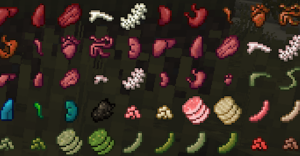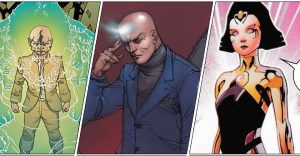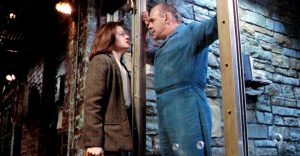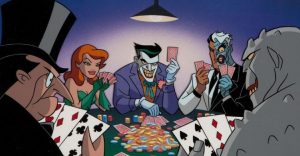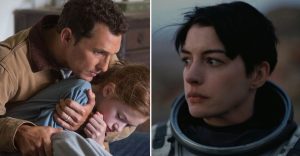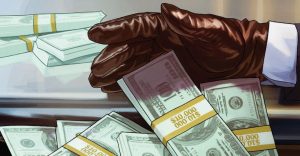15 Things You Never Knew About The Wizard Of Oz

How many films gain the legendary status The Wizard of Oz has? Few movies have earned the reputation or sizeable audience spanning multiple generations, and even fewer inspire the countless imitators, parodies, allusions and remakes. The Wizard of Oz has, in a sense, become a right of passage, certainly in the English-speaking world. What child doesn’t grow up watching the movie on DVD or cable, at home or at school?
The story behind the making of The Wizard of Oz could inspire a movie unto itself… and, technically, it has inspired several! Yet for all the viewership and commentary the film has garnered over the years, the real story behind the making of the classic movie remains untold. As the movie achieved legendary status, so did the stories behind it, and we here at Screen Rant now seek to uncover some of the mysteries and dispel some of the rumors. Check out 15 Things You Never Knew About The Wizard of Oz!
15 It wasn’t the first Wizard of Oz movie, and the author went bankrupt

Hollywood had once considered The Wizard of Oz cursed property. For that reason, MGM had no problem acquiring the rights to the bestselling novel. In fact, at least three adaptations had hit screens before the 1939 version.
The Wizard of Oz had made its first dramatic foray as a vaudeville-style musical, which played all over the country beginning in 1902. The success of the show, produced with L. Frank Baum’s involvement, prompted an early silent version by the Selig Polyscope Company in 1910. Now partially lost, the story deviated far from Baum’s novel, and only came about after Baum declared bankruptcy, having lost his Oz fortune on—ironically enough—starting his own movie studio.
Hollywood tried again in 1925 with The Wizard of Oz, a very weird adaptation that made the Scarecrow the main character of the story. The movie bombed with critics and audiences, hard enough so that it bankrupted the studio! Hollywood stayed away for years, until MGM decided it was time to give the story a Technicolor musical treatment.
14 The costumes were agony for their actors

The Wizard of Oz still contains some of the most iconic and elaborate costumes Hollywood ever created. They also inflicted horrible pain on their actors…and even almost killed one!
Bert Lahr, who played the Cowardly Lion, wore a suit made from actual lion hide (hey, these were the days before PETA). The costume weighed a whopping 90 lbs. and caused Lahr to sweat profusely to the point that the studio had to employ two wardrobe assistants for the sole purpose of drying it out every night! They could not, however do much about the smell…
Veteran actor Buddy Ebsen took the part of the Tin Man, and had to wear a costume made, in part, of real metal. The shape of the costume made it almost impossible to sit down without damaging the suit, so Ebsen would have to rest by reclining on a board. Even worse, he had a violent reaction to his make-up which put him in the hospital. MGM then recast the role with Jack Haley, who played it in the final film.
13 Judy Garland was always the first choice for Dorothy

A popular urban legend holds that MGM had wanted kiddie actress Shirley Temple in the leading role of Dorothy. While there is some truth to the rumor, isn’t not entirely accurate. Leave it to us here at Screen Rant to clear things up!
MGM had acquired the rights to The Wonderful Wizard of Oz and conceptualized it as a musical with only one actress in mind: Judy Garland, who had already enchanted audiences with her singing and knack for comedy. However, as the budget to The Wizard of Oz started to balloon, the bosses got nervous. Shirley Temple had a strong box office track record, so the studio considered using her over Garland. After an audition with musical director Roger Edens, decided not to use Temple, as her singing could not fulfill the requirements for the score. Thus, Garland got the role after all, much to her delight: her late father had read the story to her as a child.
12 The studio (and her mom) got Judy Garland hooked on drugs

Judy Garland, for all her considerable achievements, has one nasty shadow that follows her legend—that of drug addiction. Garland struggled with substance abuse through most of her adult life before finally dying of an overdose in 1969. It makes her Oscar-winning work in The Wizard of Oz all the more impressive to know that a bunch of idiots had already started feeding the young actress drugs during filming.
Judy Garland had already aged well into her teens when she began the Oz project. Because the Dorothy of the Oz books is a prepubescent girl, the bosses at MGM demanded Garland wear a painful corset to hide her figure. They also demanded that Garland keep her weight down, and prescribed amphetamines to reduce her appetite. Garland’s mother encouraged the treatment, not wanting to jeopardize Judy’s paycheck. Furthermore, California had very different child labor laws when it came to actors in the 1930s, and MGM demanded up to 16 hour work days from the teen Garland. With so little time to rest before the next day’s call, rather than go home, Garland would go to the studio infirmary, where a nurse would administer barbiturates to counteract the amphetamines and knock her out. The mixture of drugs would forever ensnare Garland, and affect her the rest of her life.
11 WC Fields and Ed Wynn both rejected the part of the Wizard

MGM and producer Mervyn LeRoy had a strategy when casting the picture. With Judy Garland a proven talent, if still unknown actress, the part of the Wizard would go to a great actor with a string of box office hits. The studio first offered the part to comedian Ed Wynn (famous as the voice of the Mad Hatter in Disney’s Alice in Wonderland), who rejected the part as too small. A script rewrite expanded the part to include the roles of Professor Marvel, the Emerald City coachman, and the city guards. Still, Wynn balked. The studio then approached W.C. Fields, who bore a strong resemblance to the Wizard in the novel’s original illustrations. Fields first accepted before backing out over pay issues. The part instead went to character actor Frank Morgan, who had a long history at MGM. Legend holds that Morgan wore a coat in the film originally owned by Oz author L. Frank Baum, though recent historians have disputed the story as a PR move by the studio.
10 The make-up requirements were unprecedented

Hollywood decided to set The Wizard of Oz before the cameras in an era long before prosthetic make-up technology became commonplace. The size of the cast also made the make-up an issue, as even today skilled technicians must apply the cosmetics for them to have the proper effect. The Munchkin make up, which required false ears, noses, wigs, bald caps and hair appliances, force the studio to make the unusual move of recruiting new make-up techs from the mail room and around the studio! Rather than learn every part of the make-up process, these new artists formed an assembly line. The Munchkin actors would move from station to station having different elements of their make-up applied at each stop.
The make up of the three Ozian principles—the Scarecrow, Tin Man and Lion—also required a fair amount of innovation. In particular, the Lion make-up proved troublesome, and actor Bert Lahr couldn’t eat while wearing it. Initially Lahr tried to subsist on soup and milkshakes, though as production dragged on for almost three years, he eventually demanded that the studio reapply his make-up after lunch.
9 Several musical numbers got cut

The music in The Wizard of Oz ranks among the most recognizable and cherished ever. Keen viewers might notice, however, that after Dorothy & co. meet the Wizard the first time, no further songs appear in the film. This happened more by coincidence than by design.
Original plans for the music in Oz featured songs all the way through the film. On the way to the castle of the Wicked Witch, Dorothy and the gang were to have encountered an evil insect called “the Jitterbug” that would have forced them all to dance. MGM ordered the elaborate number cut during editing, as the studio thought the song slowed down the pace of the film. MGM also wanted to avoid association with the out-of-style Jitterbug dance craze. A reprise of “Ding Dong, the Witch is Dead” would have played as Dorothy returns to Emerald City after defeating the Witch of the West, but it too got scrapped over pacing issues. Judy Garland also filmed an “Over the Rainbow” reprise which would have featured during Dorothy’s imprisonment in the Witch’s castle, but when members of the crew broke down into tears listening to the song, the studio ordered it cut for being too depressing.
8 Walt Disney inspired the project with Snow White

Snow White and the Seven Dwarves had shocked the world by proving not only that Hollywood could not only create a feature-length animated film, but that audiences would actually sit through one! The success of Snow White finally convinced MGM to produce The Wizard of Oz, which integrated a number of similar motifs into the film. Both used music as a way to create the fantasy atmosphere. The original concept for the Wicked Witch of the West also more resembled the Evil Queen from Snow White. Actress Gale Sondergaard had taken the part of the Witch under the impression that she would play the role as a slinky, sexy, glamorous witch. When the studio retooled the character into the ugly hag in the final film, Sondergaard quit the movie, not wanting to damage her sexy movie star image. Years later, Disney would try to produce its own Oz movies with the sequel Return to Oz, and later, Oz The Great and Powerful.
7 The Ruby Slippers are the most prized piece of movie memorabilia ever

The value of movie memorabilia has skyrocketed in the past few decades, and one bit of costume towers above all others: the Ruby Slippers. Dorothy’s famous shoes today carry an appraised price of $1.5 million a pop! Believe it or not, it took Hollywood almost 50 years to figure out the popularity of the shoes.
One man figured it out before everyone else. Kurt Warner worked as a designer and wardrobe assistant around Hollywood in the 1970s. As MGM prepared to sell off its backlot for residential development, it decided to auction off its stores of props and costumes. Warner volunteered to work prepping costumes for the auction. Instead of money, MGM gave him his pick of costume pieces to take home for free. Warner began stockpiling iconic costumes—Scarlett O’Hara’s dress, Humphrey Bogart’s trench coat—to sell out of the trunk of his car. He wanted one specific piece for himself: the Ruby Slippers.
Warner eventually stumbled upon the slippers in a smelly warehouse and smuggled them home. In fact, he found several pairs, including a pair used for test photos. He would later sell the slippers to ravenous buyers, while keeping one pair for himself. Warner contracted AIDS in his later years, and donated the sizable fortune he made on movie costumes to AIDS charities.
6 Contrary to popular belief, the movie was not a bomb

One popular misconception about The Wizard of Oz pegs it as a major bomb on release. Like many of the legends that have grown up around the movie, the truth is more complicated.
The initial release of The Wizard of Oz grossed about $3 million in ticket sales—a very high figure for the ‘30s. The movie had incurred a colossal budget over the years, owing to the extreme technical demands, cast changes, director changes and botched Technicolor film. Therefore, the budget itself approached $3 million, making the movie a break-even or moderate success. The Wizard of Oz also faced some tough competition at the box office, in particular from the perennial classic Gone with the Wind. Still, Oz did solid business, in fact, better than industry analysts expected. Over the years the notion would arise that the movie bombed thanks to its enormous budget, or the fact that MGM withdrew it from theatres, while other hits like Gone with the Wind played for years.
5 MGM wanted a sequel

As a further testament to the success of The Wizard of Oz, MGM wanted to start straight away on a sequel to the movie. L. Frank Baum wrote an impressive 14 Oz novels in his lifetime, while author Ruth Plumly Thompson continued the series with dozens of more stories. The sequel, however, became a victim of the first movie’s success.
Judy Garland rocketed to the top of the showbiz A-list following her work in Oz and MGM set to work keeping her busy for years. The cost of producing The Wizard of Oz made studio bosses wary of green lighting yet another megaproduction, especially after the failures of several Oz rip-offs like The Blue Bird (which starred Oz cast rejects Gale Sondergaard and Shirley Temple). Margret Hamilton had also expressed hesitation when the studio approached her about the sequel. The actress had become an overnight embodiment of evil (go figure) and she worried that her performance had scared audiences a bit too much. The Wizard of Oz wouldn’t get a proper live-action sequel until Return to Oz, produced by Disney in 1985.
4 The production was one of the most expensive in history

Fire effects. Technicolor. Extensive reshoots. Crazy make-up. Long rehearsals. Outrageous costumes. It should come as no surprise that the opulent production of The Wizard of Oz with its $3 million price tag became one of the most expensive in movie history. Like fantasy movies today, the story demanded state of the art special effects, as well as innovative make-up and fancy costumes, all of which came at a high cost. The extended production period on Oz also forced the budget to balloon. Richard Thorpe (more on him in a moment) had initially begun direction of the picture, though only shot two weeks on the picture. Buddy Ebsen’s life-threatening illness resulted in Thorpe getting fired by the studio.
Thorpe’s vision of Oz looked almost nothing like the magical vision in the finished film. For starters, Thorpe encouraged a more stylized look to the picture, having Judy Garland don a blond wig and thick baby doll make-up. Subtle differences in the other character costumes exist as well. Though sparse, Thorpe’s footage has become something of a holy grail to film buffs—none of it, save for a few camera tests, has ever seen the light of day. Today, experts think MGM buried it in a dump site along with the rest of the film’s deleted scenes, whereabouts unknown.
3 It had four directors

Richard Thorpe started out as director on Oz, but lasted only two weeks in the director’s chair. Buddy Ebsen’s illness forced the production to shut down while the studio recast the role of the Tin Man, and in the interim, the studio decided to fire Thorpe. George Cukor, Oscar-winning director of movies like My Fair Lady stepped into the job, giving the project a total work over. Cukor hated the broad, stylized performances of the actors, and advised them all to play their parts naturalistically. He also revised Judy Garland’s costume and make-up to look more realistic, and gave the actress some tips on playing Dorothy as a young girl, rather than a cartoon. Cukor also selected Jack Haley to take on the part of the Tin Man.
Before production could begin again, Cukor left Oz to start direction on Gone with the Wind. Victor Fleming then took over production, and filmed the bulk of the film. Ironically, Cukor lasted only the preproduction and a few weeks of filming on Gone with the Wind before star Clark Gable had him fired for being gay! With all the color sequences on Oz complete, Fleming departed to replace Cukor yet again. Veteran director King Vidor directed most of the sepia-tone sequences and oversaw editing alongside producer Mervyn LeRoy.
2 It became particularly loved after showings on TV

Though a box office success and the recipient of several Oscars, The Wizard of Oz fell by the wayside thanks to the lauding of Gone with the Wind as the greatest movie ever. Both films would have their reputations evolve over the years however. MGM only gave it one rerelease in the 1940s, before the movie landed on television in 1956. It became a surprise rating smash, and beginning in 1959, the broadcast of The Wizard of Oz became a much-anticipated annual tradition. Celebrities like Dick Van Dyke or Danny Kaye would host the broadcast, often with their children, discussing how much they loved the film.
It’s hard to understate or understand the importance the tradition of The Wizard of Oz on TV in a pre-video era. Few movies received annual broadcasts, and even fewer had the fanfare CBS afforded to the film. Beginning with the 1956 broadcast, the film became a ratings sensation. Almost half of all people watching television watched the film, and it smashed the competition from other networks. It remained a network staple until 1998, when the film moved to cable for the first time.
1 The cast sustained all kinds of injuries

Part of the legend of The Wizard of Oz comes from the outrageous injuries sustained by the cast. Besides Garland’s drug addiction and Ebsen’s near-death experience, Margret Hamilton, as the Witch, sustained second and third degree burns all over her body. Her injuries came about filming the Munchkinland sequence when a fire effect went off too early. The green make-up she wore contained copper, and when heated, it began to eat away at her skin!
Hamilton’s stunt double spent six months in the hospital after a prop broom exploded—the actress had declined to perform the stunt after getting burned. Several of the winged monkeys sustained injuries after the wires on their flight harnesses snapped and dropped them to the floor of the soundstage. Even Terry, the terrier that played Toto, need a few weeks off after someone stepped on her during a scene. Contrary to urban legend, nobody committed suicide on film! Rumor holds that a stagehand or booze-addled Munchkin actor hung himself during the “Only Had a Heart” sequence. Careful review of the footage reveals that nobody died—heck, most of the trees were painted anyway—and that the rumor likely began when viewers mistook an ostrich for a hangman thanks to poor picture resolution on TV.
—
Know a secret we didn’t share? Tell us in the comments!










